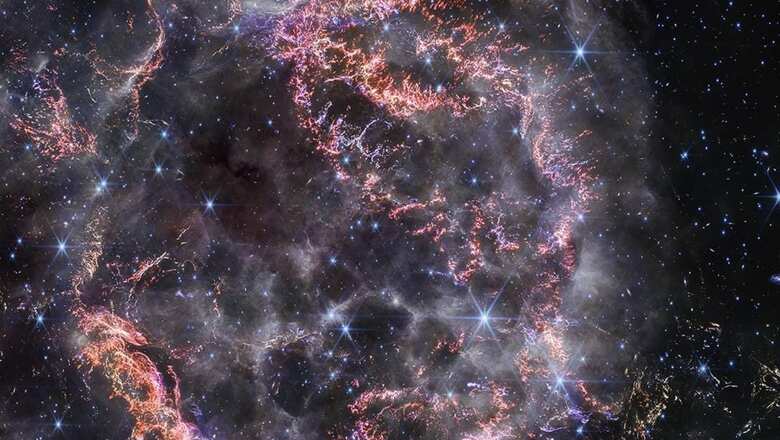
views
Modern science has enabled us to peek beyond our planet, and into space. Many visuals taken from outer space are breathtaking and leave us in awe. We are going to show you one of them today. An amazing image of a celestial spectacle was captured by the European Space Agency (ESA). The image shows an exploding star that shattered like glass. This cosmic event shows the intricate movements of fragments of a star hanging in space with clarity that has never been seen previously. We can see what occurs when a star explodes because of the cutting-edge technology developed by the ESA, which gives us a thorough grasp of the cosmic forces at play. The European Space Agency shared a series of images and videos on Instagram that show the breathtaking perspective from deep space. The remnants of a star following a supernova are shown in these photos captured by the James Webb Space Telescope. The caption explained the phenomenon in detail.
A post shared by ESA – European Space Agency (@europeanspaceagency)
Stars burn during fusion, releasing energy from their cores. As big stars get older and run out of fuel, their gravity pulls stronger than the fusion’s outward thrust. An explosion blasts the decaying star’s elements into space. The main cosmic source for the production of heavy elements is supernova. Earth was first exposed to light from Cassiopeia A’s explosion about 340 years ago. Scientists think that the star responsible for the explosion had a mass sixteen times that of the sun in its early stages, but that it had shrunk to a mere five times the sun’s size prior to exploding.
Since the explosion occurred hundreds of light-years away from Earth, it took thousands of years for its light to reach us. Because they are broader than visible light, the wavelengths of light that Webb’s NIRCam measures are invisible to the human eye.
Consequently, to get the new image, scientists converted the infrared light into a variety of colours. The updated picture shows the inner shell of the explosion, which is made of neon, oxygen, argon, and sulphur from the star. It’s a bright pink and orange colour. NASA claims that chemicals and dust in this gas will eventually lead to the formation of new stars.
What's your reaction?




















Comments
0 comment